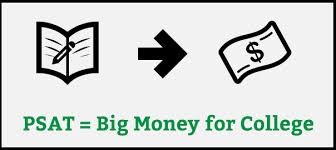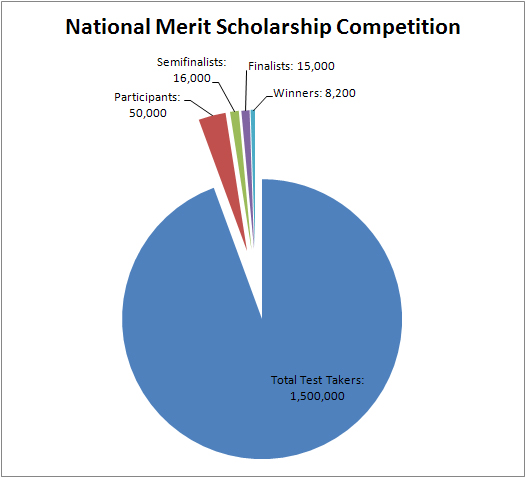 Are you prepared to take the PSAT in October? Though the PSAT is only a preliminary test, it becomes quite important in 11th grade when students may qualify for National Merit and Achievement Scholarships – and College Board data shows the more practice with the test, the better students score on the SAT. Have you planned, prepared, and practiced in order to perform on the PSAT? Bestcollegesonline.com article “13 Reasons the PSAT Is More Important Than You Think” outines the importance of the PSAT. Bottom line: this test is important for high school 9th, 10th, and especially 11th graders, and the more prepared you are, the better off you will be long-term. Here’s what you need to know about the PSAT:
Are you prepared to take the PSAT in October? Though the PSAT is only a preliminary test, it becomes quite important in 11th grade when students may qualify for National Merit and Achievement Scholarships – and College Board data shows the more practice with the test, the better students score on the SAT. Have you planned, prepared, and practiced in order to perform on the PSAT? Bestcollegesonline.com article “13 Reasons the PSAT Is More Important Than You Think” outines the importance of the PSAT. Bottom line: this test is important for high school 9th, 10th, and especially 11th graders, and the more prepared you are, the better off you will be long-term. Here’s what you need to know about the PSAT:
-
It’s the only way to qualify for a National Merit Scholarship:

The National Merit Scholarship is a prestigious award that makes testing well on the PSAT a mandatory requirement for winning. As less than 1% of PSAT-takers score well enough to be named Merit Scholars, the distinction is an instantly recognizable feature on any college application. And while winners will have other factors like their academic records and the endorsements of their teachers taken into consideration before securing the “finalist” status, it all starts with this little practice test.
-
… which is a key to major college scholarships:
This is probably the best-kept secret in the college scholarship world: schools practically kill to get National Merit Scholars at their schools, and they are willing to pay for the privilege of being able to boast a large number of them each year. The National Merit Scholarships are worth anywhere from $2,500 all the way up to $10,000 per year, and some schools will even offer free rides for worthy enough Scholars. But even finalists and semi-finalists for the award can see increased scholarship offers.
-
… which is important because fewer scholarships are being handed out:
Anything you can do to increase your odds of landing a scholarship is important, because the amount of scholarship money to be had is steadily dropping. According to student lender Sallie Mae, grants and scholarships fell from an average of $7,124 per undergraduate to $6,077 for the 2011-2012 academic year, a whopping 15% slide. Colleges are starting to make it harder to qualify for merit-based scholarships, which makes being a National Merit finalist or winner even more critical. To learn more about the National Merit Scholarship, click here.
-
If you qualify, you’ll also gain access to the National Achievement Scholarship Program:
The NASP is a scholarship program that’s only available to African-American high school students and is responsible for 700 scholarships of $2,500 each. Like the National Merit Scholarship, the door is also opened to corporate scholarships. Nearly 5,000 African-American students are honored each year, and of those, 3,100 get college referrals as promising candidates. The PSAT also puts African-American students on the radars of advisors and recruiters through the National Scholarship Service.
-
It’s vital practice for the real thing:
The proof that taking the PSAT pays off is already out there: in 2011, the College Board found that students who took the PSAT scored 145 points higher on the SAT than their peers who skipped the PSAT.
-
It could be a good wakeup call:
October is the most popular month for seniors to take the SAT because it gives them time to take it at least once more before college application deadlines, which typically occur around the first of the year. Many who are unhappy with their scores will take it two or even three more times to attain the best score possible. It is much more advisable to iron out the kinks your junior or even sophomore year by taking the PSAT. That gives you plenty of time to increase your studying level, if necessary.
-
The majority of students’ SAT results show they’re not ready for college:
Clearly most students today need more studying and practice-testing time, as last year’s crop of SAT-takers proved. According to the College Board’s College and Career Readiness Benchmark, only 43% of students who took the SAT in 2013 demonstrated with their scores that they were prepared to move on to college-level courses. Scores fell in all three categories of the SAT, with reading scores at their lowest mark in four decades.
-
It provides a way for colleges to contact you:
It’s to your advantage as a college-bound student to make it as easy as possible for colleges to contact you. Through a program called the Student Search Service, the College Board (the group that administers the PSAT and SAT) allows students to share “personal and preferential” information with more than 1,100 colleges and scholarship boards for no cost. The service is opt-in, and you won’t get bombarded by spam mail. The SSS is a great way to hear from colleges you may never have considered.
-
It allows you to stack yourself up against other students:
While you should have a fairly good idea what kind of college you can expect to get into after you graduate, there’s also a fairly strong chance of overestimating your marketability to a school. You don’t want to find out by trial and error that your strong SAT score and above-average grades aren’t good enough to get you into your top choice (as happened for some in the Class of ’16). And although the PSAT won’t entirely solve this problem, it will give you a good idea of how you rank compared to your competition while you’re still in your junior year and have time to make changes.
-
You can take advantage of My College QuickStart:
Every student who takes the PSAT gets access to a program called My College Quickstart. It’s a free resource that lets you use your PSAT scores to predict your future SAT score, go over questions you got wrong on the test, see a list of recommended colleges that are a match for your stated degree interest, have a customized SAT study plan created for you, and even view suggested majors and career choices that might be a fit for you.
-
It can help you study smarter:
Once you’ve used My College Quickstart to review what kinds of questions you missed on the PSAT, you’ll be armed with invaluable knowledge about where to focus your studying. We know it’s the real world, and you have only so much time to dedicate to SAT prep, so why waste time studying for a subject you already have down cold?
-
You need to take it to keep up with your classmates:
Your peers may have made it even more important to take the PSAT your junior year, because some of them have already taken it once or even twice by their junior year. The College Board reports over half (56%) of the PSAT-takers in 2013 were sophomores or younger, which on average helps them score 3.5 points higher on each section of the PSAT their junior year.
-
It can encourage you to take some advanced placement courses senior year:
An SAT score comes too late to allow a student time to schedule one or two AP classes in high school. As you are no doubt aware, most colleges want to see at least one of these college-level courses on an application as evidence that students have challenged themselves and can handle more difficult material. If you doubt your own abilities, your PSAT score could give you the proof that you can handle the work and should go for it.
MathSP can help your child excel on all sections of the PSAT & SAT! Learn more about MathSP SAT & PSAT prep options.

